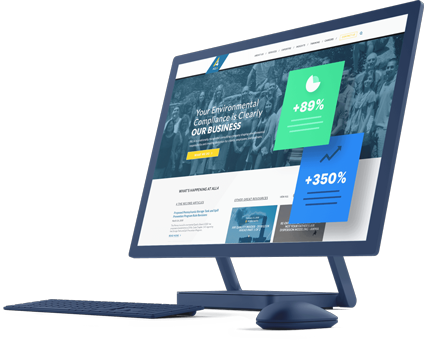55% of marketers say finding leads that convert is their biggest challenge in generating new leads. If you feel you fall into this percentage, we’ve got you covered.
To continuously earn sales and revenue, you must generate leads and encourage them to convert into customers or clients.
But how can you effectively generate and nurture high-quality leads that purchase your products or services? The answer: lead pipeline management.
On this page, we’ll cover the ins and outs of lead pipelines. Here’s a quick overview of what we’ll cover below:
- What is a lead pipeline?
- What is lead pipeline management?
- Why is lead pipeline management important?
- Lead pipeline management best practices
So, keep reading to learn how to generate and convert more leads for your company!
What is a lead pipeline?
A lead pipeline represents how your prospects move through the various stages of your sales process. It’s a visual snapshot of where your leads are in their journey toward becoming customers or clients.
There are typically three stages of a lead pipeline:
- Awareness: The consumer realizes they have a pain point or problem they want to solve. They look for informational resources or content to help them better understand their problem.
- Consideration: The consumer clearly defines their pain point and makes it a top priority to solve. They research steps, processes, and actions to solve their problem. Prospects also start to create a list of possible solutions.
- Decision: The consumer fully commits to one solution or method to alleviate their pain point. At this stage, consumers narrows down their list of options to find the best product or service.
Analyzing your lead pipeline is the best way to understand your leads’ actions before they become customers or clients.
What is lead pipeline management?
Lead pipeline management is the practice of actively analyzing your lead pipeline to understand your prospects’ journey and what actions you should take at each stage to nurture and convert your leads.
It lets you organize and monitor prospects and your current closed sales to track whether you’re reaching your goals.
For example, by analyzing your lead pipeline, you can view:
- Which marketing channels led to prospects discovering your brand
- How prospects engage with your website
- Which types of content, web pages, and channels your prospects engage with
- The last interaction a prospect had with your brand before converting
As a result, you can identify which channels and strategies drive your business’s leads and conversions. That means you can optimize these channels to generate future leads and sales.
Why is lead pipeline management important?
So, why is lead pipeline management important?
Let’s dive into three significant benefits of managing your lead pipeline that show why it’s essential for business:
- More effective marketing strategies: Managing your lead pipeline helps you identify which channels drive the most leads and conversions. As a result, you can focus on the marketing strategies that boost revenue for your business and optimize them to improve your results.
- Integrate your sales and marketing teams: Your sales and marketing teams must work together to generate and nurture leads successfully. Lead pipeline management enables your sales and marketing teams to work together to implement strategies that attract high-quality leads and nurturing tactics to close more sales.
- Improved return on investment (ROI): One of the best benefits of managing your leads is that it helps you earn a higher ROI. It enables you to track your customer’s journey so you can make optimizations to your strategies that move more leads down your marketing funnel toward conversion.
To increase sales and grow your business, you must generate and convert leads. And to attract and convert more leads for your company, you need to manage your lead pipeline.
4 lead pipeline management best practices
Ready to start managing your leads like a pro? Check out these four lead pipeline management best practices:
- Monitor lead pipeline metrics
- Continuously review and improve your lead pipeline
- Optimize your sales processes
- Create content for each stage of your lead pipeline
1. Monitor lead pipeline metrics
Your lead pipeline will continuously change over time as leads enter, drop out, and convert. That’s why monitoring your lead pipeline metrics is essential to keep an eye on your leads’ journey.
You’ll want to track metrics like:
- The number of leads in your pipeline
- The number of closed deals in your pipeline
- Your close ratio, or your average percentage of closed deals
- The number of leads that drop out of your pipeline
- The number of leads that enter your pipeline
By keeping an eye on these metrics, you can track whether your marketing strategies help you successfully generate and convert leads. Additionally, you can measure the success of your lead generation efforts in helping you achieve your overall business goals.
2. Continuously review and improve your lead pipeline
You must regularly monitor your lead pipeline and adjust your techniques to ensure your lead generation and nurturing efforts are finely tuned and optimized to drive the best results.
You should review:
- Which channels drive the most leads
- What content and pages encourage leads to convert
- Where leads drop out of your pipeline
By reviewing this information, you can focus on and improve the channels that attract leads to generate even more high-quality leads for your company.
You can also identify holes or bottlenecks where leads drop out of your pipeline. As a result, you can fix these blockages to help more leads move down your pipeline toward conversion.
3. Optimize your sales processes
Tracking your lead’s journey to becoming a customer or client gives you valuable insight into which techniques and strategies encouraged them to convert.
With this information, you can optimize your sales processes to ensure your team is always on the same page.
For example, suppose you discover that most of your leads convert after receiving a follow-up email after a consultation. In that case, you’ll want to ensure your entire sales team always sends a follow-up email to your prospects to help you close more sales.
4. Create content for each stage of your lead pipeline
You must move your leads down your pipeline to increase conversions and sales. And the best way to encourage your leads to become customers is to create content for each stage of your pipeline.
Content is crucial for giving your leads the information they need and providing them with solutions to their problems. It also helps them learn more about your business and recognize your brand as an expert in your field.
Let’s go over how you can create content for each pipeline stage below:
- Awareness: Creating blog posts or articles that enable readers to learn more about their problems is an excellent idea for this stage. For example, if you sell hand moisturizers, creating an article about dry hands and its causes could be helpful for your audience.
- Consideration: Consumers actively search for solutions to their problem or pain point at this stage. You can create informative articles or blog posts that detail how your products can solve your audience’s pain points. For example, if you offer computer repair services, you can create content that explains that one of the best ways to repair a laptop screen is to take it to a computer repair expert.
- Decision: Consumers are ready to purchase a product or service to alleviate their problem. At this stage, creating service or product pages that detail the benefits of working with your company or purchasing your products is an excellent idea.
Creating content for each stage of your pipeline enables you to nurture your leads and move them to the next stage in your pipeline.


